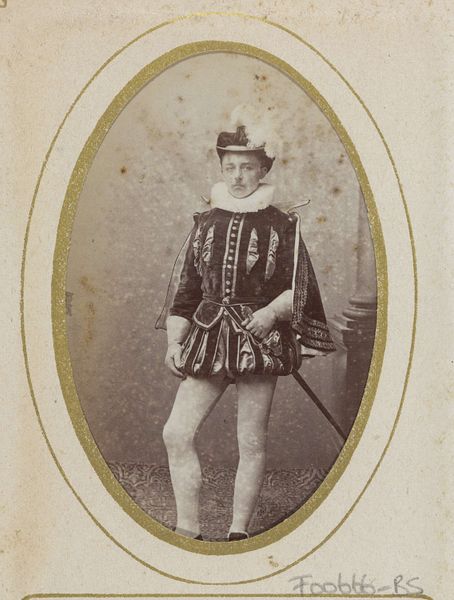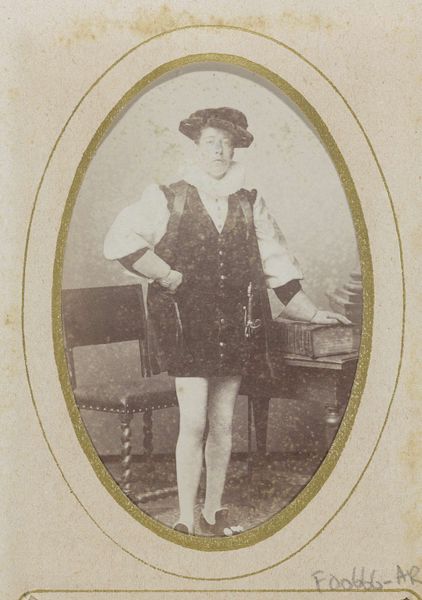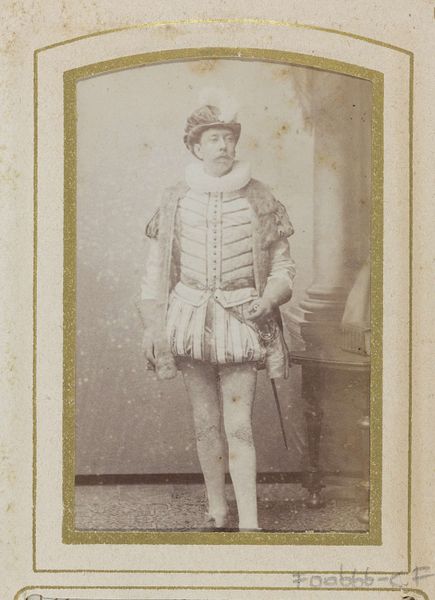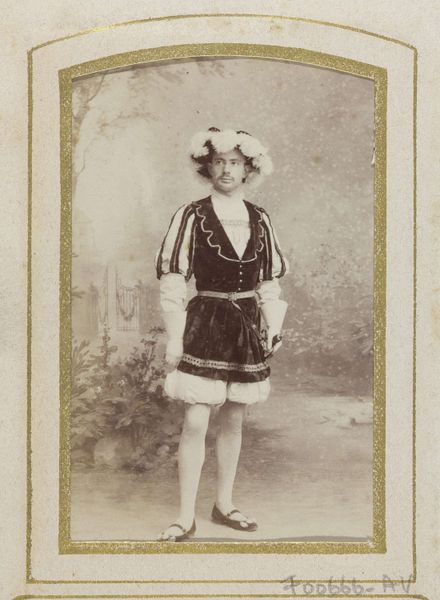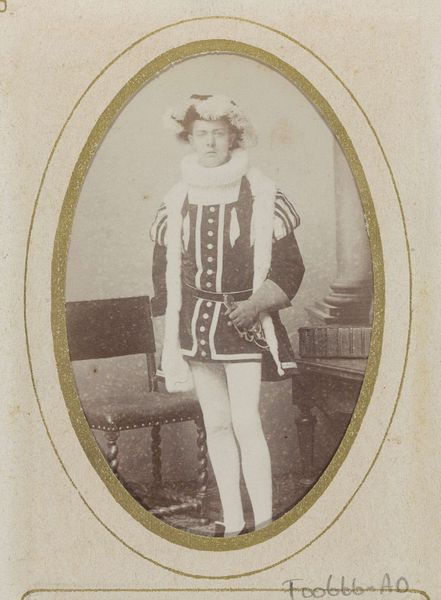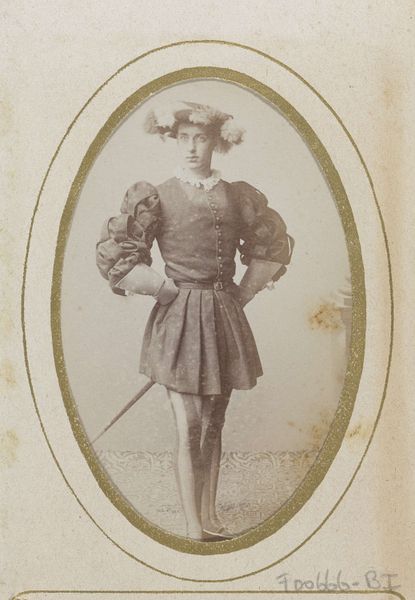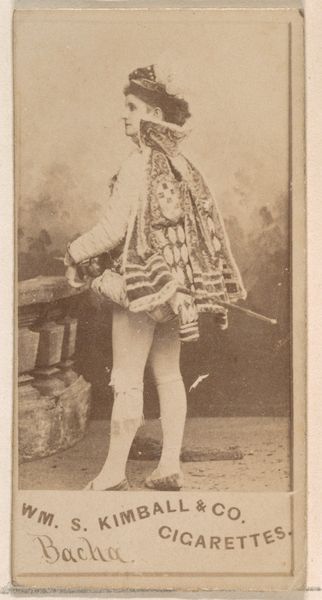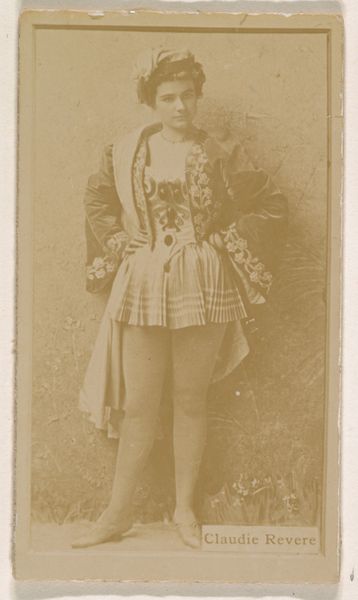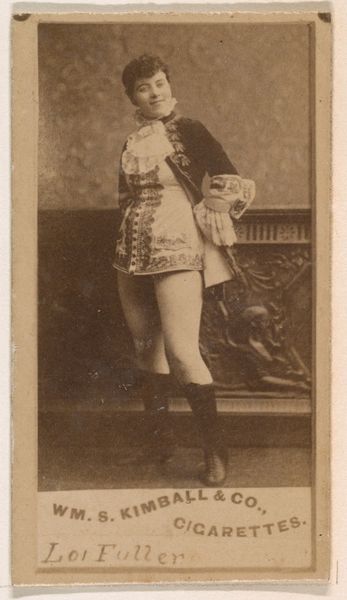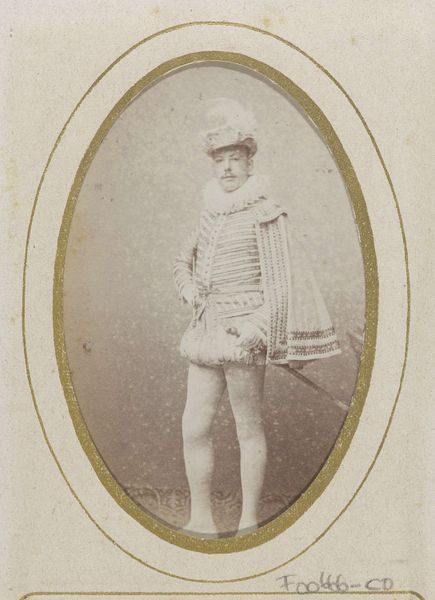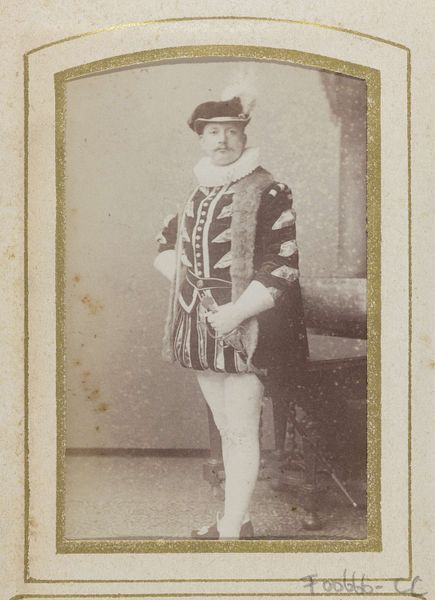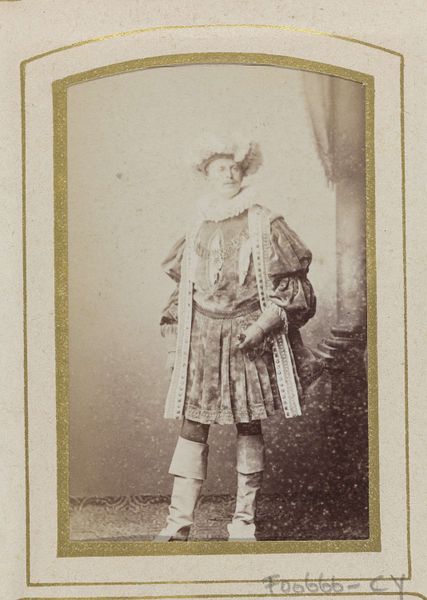
photography
portrait
photography
19th century
watercolour illustration
academic-art
Dimensions: height 83 mm, width 52 mm
Copyright: Rijks Museum: Open Domain
Editor: So, here we have a photographic portrait titled "Portret van Jan Gerritzen in kostuum met degen" by Jan Goedeljee, dated sometime between 1886 and 1892. What strikes me is the very deliberate costuming. How should we interpret the use of these elaborate materials? Curator: Well, considering a materialist perspective, we have to look at the cost and production of that costume. Think about the velvet, the lace, the dye... What does the choice and display of those specific materials communicate about the sitter’s identity or the intended audience? Who was consuming this image and why? Editor: So it's less about the aesthetic and more about the labor and resources represented. The person must have been fairly wealthy, right? To afford the fabric, the tailoring… even the photographic process itself at that time. Curator: Precisely. And it challenges us to question the line between ‘high art’ photography and its commercial purpose. Was this simply a record, or was it intended to elevate the sitter's status? Consider the relationship between the photographer, Goedeljee, and his patron. How did that relationship impact the choices in materials and composition? What statement were they trying to produce? Editor: It makes me wonder about the intended audience for this type of photographic portrait and if that differed depending on who paid for it or who made it... The photograph itself becomes a commodity, reflecting social stratification. Curator: Absolutely. By examining the material circumstances of its production and consumption, we gain a much richer understanding of this portrait's place within 19th-century society. It shifts our focus from individual genius to the broader systems of labor, capital, and social relations that underpinned artistic creation. Editor: That definitely offers a whole new lens. It’s not just an image; it’s a snapshot of material culture and the relationship between people and things. Curator: Exactly, and that’s precisely what a materialist approach helps us to see.
Comments
No comments
Be the first to comment and join the conversation on the ultimate creative platform.

